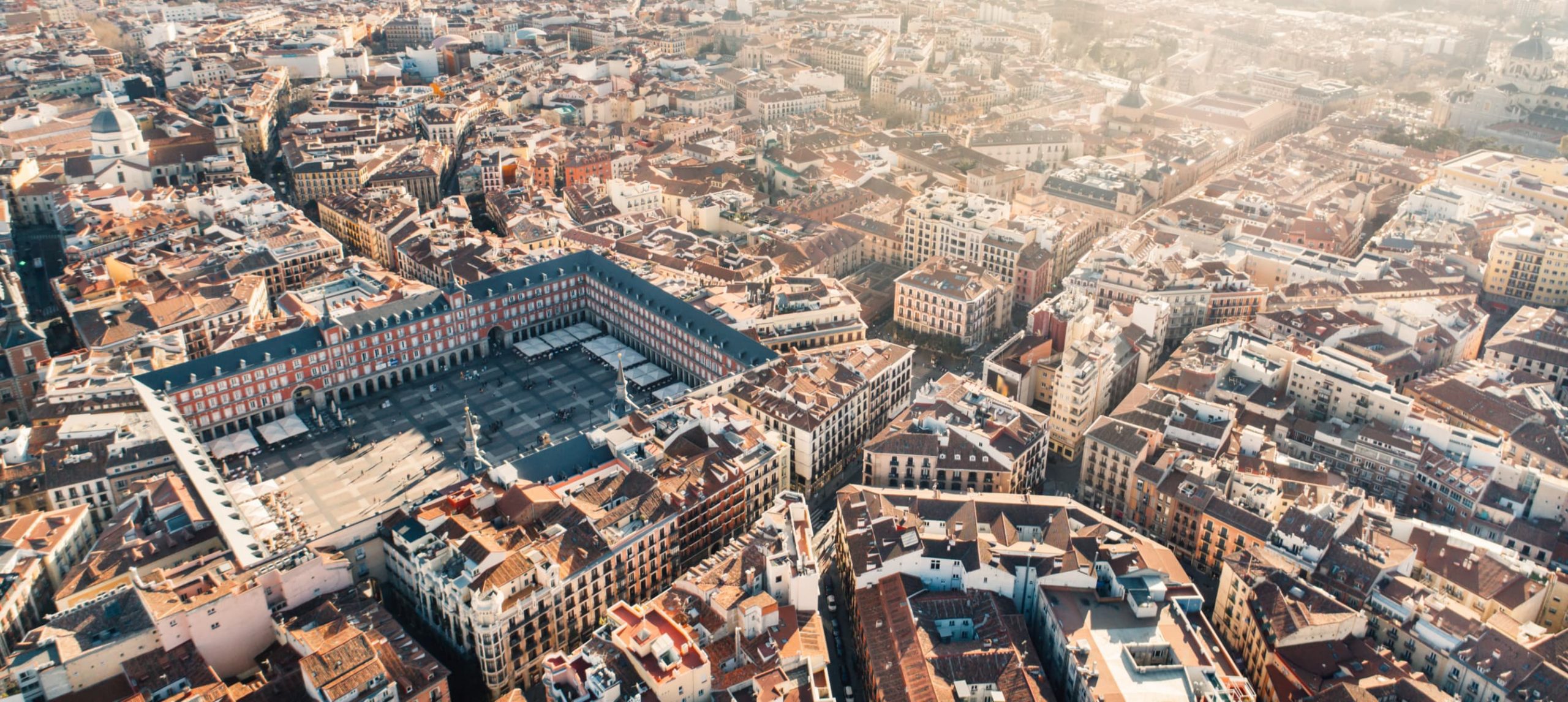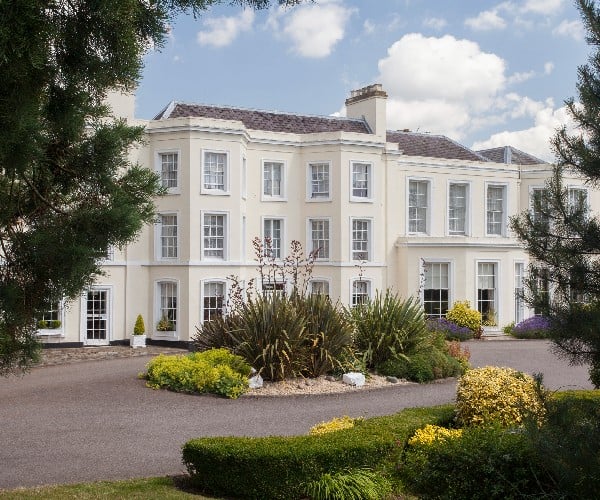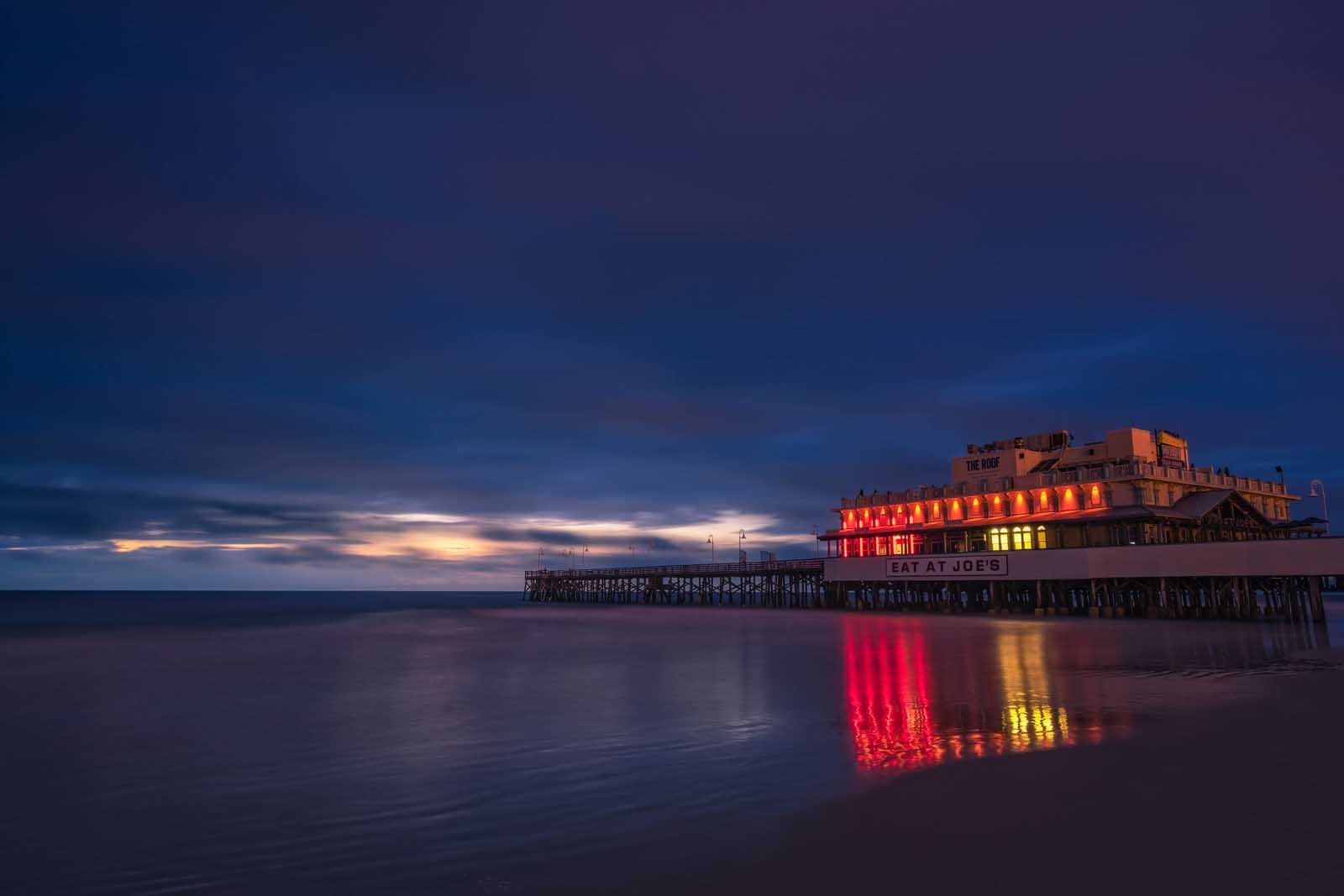The 12 Best Neighborhoods in Madrid, Spain
Madrid is divided into a pack of very different yet equally loveable neighborhoods — each one offering its own unique range of experiences. Some feature an array of lively bars and restaurants, while others are praised for their characterful...

Madrid is divided into a pack of very different yet equally loveable neighborhoods — each one offering its own unique range of experiences. Some feature an array of lively bars and restaurants, while others are praised for their characterful old streets and history-filled landmarks.
Whether you’re looking for the perfect vantage point in the Spanish capital, or simply want to explore Madrid’s many facets, learning about the city’s top neighborhoods beforehand will certainly make your trip planning easier.
Here’s our guide to the top neighborhoods, aka barrios in Spanish, to stay in and explore when visiting Madrid.
Find Places To Stay In Madrid, Spain
The 12 Best Madrid Neighborhoods
Sol

Sol is located in heart of the city, and it’s one of the most upscale neighborhoods in Madrid. The name of the area comes from its main square, Puerta del Sol, which has witnessed some of the most significant events of Spanish history, including the proclamation of the Second Republic in 1931. Lined with vibrant cafes and restaurants, the square is home to the iconic El Oso y El Madroño statue that represents a bear eating fruits from a tree and it’s one of the best-known symbols of the Spanish capital.
What makes Sol special is the fact that this neighborhood is home to some of the top attractions in Madrid. In there, you’ll find not only the vibrant Puerta del Sol square, but also big-name museums like the Reina Sofía Museum, and fabulous landmarks such as the majestic Teatro Real.
Sol is also filled with an array of urban amenities such as stores restaurants, bars, and nightclubs, making it a great area to stay in Madrid.
Huertas

Huertas is located east of the city center and was historically a meeting point for famous artists, writers, and playwrights. Not by chance, this area became known as “el barrio de las letras,” or the Literary Quarter, and still to the present day, it maintains plenty of its history and literary references.
While roaming around Huertas picturesque tree-lined cobbled streets, you’ll come across centuries-old houses and atmospheric cafes that look like they came out of a book. One of the neighborhood’s most fascinating locations is, by far, the historical house where Miguel de Cervantes — author of Don Quijote — died in 1616.
There’s also the leafy Plaza de Santa Ana, which is dotted with monuments that pay homage to iconic Spanish writers Calderón de la Barca and Federico García Lorca.
Other must-visit attractions in Huerta include the worldwide known Museo Nacional Del Prado, considered one of the top museums in Madrid thanks to its dazzling collection of European art.
Not to mention that the area is also known for being home to some of the best tapas bars in Madrid, aside from boasting one of the best nightlife scenes in the city.
Chueca

Chueca is a lively neighborhood nestled in the center of the city. It is best known as the LGBTQIA+ neighborhood in Madrid, and when summer arrives, the area becomes the epicenter of one of the city’s most awaited gay-friendly parties, the Madrid Pride Festival. During the event, this entire barrio comes alive with a lineup of activities and events, aside from being fully adorned with colorful flags and banners.
Some of the top things to do around this neighborhood include strolling around Plaza de Chueca, a charming central square surrounded by cafes and restaurants, visiting Museo Del Romanticismo, home to a collection of 17,000 paintings, drawings, prints, sculpture, furniture, photography, and decorative arts, and go shopping in Chueca’s tempting markets and stores.
Also, don’t pass up the chance to marvel at Chueca’s eye-popping architecture. From pretty balconies overlooking quiet streets to the grandiose Palacio Longoria, dating back to 1902, this fascinating neighborhood hides alluring details around every corner.
Salamanca

Considered one of the best neighborhoods in Madrid —and also one of the most expensive—, Salamanca shows both madrileños and tourists the real meaning of the word indulgence. This glamorous area situated in the northeast of Madrid is a haven for the luxury-loving, as it’s packed with an array of exclusive shops, especially around the Golden Mile area, aside from being home to a variety of Michelin-starred restaurants like Ramón Freixa Madrid, Zalacaín, and Kabuki Wellington.
Salamanca is also known for its unrivaled cultural offerings — from world-class museums to art galleries. Be sure to visit the National Archaeological Museum, home to a striking Numismatics collection that dates back to the 6th-century BC, and the Lázaro Galdiano Museum, which plays host to masterpieces by Goya, El Greco, Zurbarán, and Hieronymus Bosch.
Malasaña

Travelers seeking to take in a young and vibrant atmosphere can’t pass up the opportunity to visit Malasaña. Located north of downtown Madrid, this laid-back neighborhood is one of the best known in the city thanks to its thrilling nightlife scene.
In Malasaña, you’ll find some of Madrid’s most tempting nightlife venues, from trendy bars to cutting-edge nightclubs and superb rooftops. For that reason, this neighborhood has become a lively hub for students, hipsters, and bohemian travelers in search of experiencing the city’s buzz and vibrancy.
This area also features an array of great cafes, and vintage clothing stores, as well as eye-popping street art murals (See Mauro Entralgo’s Mural at Tupperware is a must-see).
If you plan to visit Malasaña anytime soon, be sure to check out the Municipal Museum of Contemporary Art, and Palacio de Liria, which belonged to one of Spain’s wealthiest families (Alba family) and it’s home to paintings by Goya, El Greco, Velázquez and Rubens.
Austrias

El Madrid de los Austrias is home to dazzling landmarks that evoke the rich history of Spain. The neighborhood is the oldest in Madrid and the perfect destination for those seeking to dive deep into the city’s fascinating past.
In Austrias, you’ll stumble upon a treasured collection of monuments. One of the most precious is the majestic Royal Palace, which was built in the mid-1700s for King Philip V, and served as the home to several Spanish monarchs — from Charles III to Alfonso XIII.
The neighborhood is also home to Almudena Cathedral, designed as a pantheon for Queen María de las Mercedes, the wife of Alfonso XII, as well as the alluring Jardines de Sabatini (Sabatini Gardens), and the iconic Plaza Mayor.
La Latina

The picturesque area of La Latina, in the heart of Madrid, captivates visitors with its charming narrow streets, eclectic nightlife, original markets, and delicious tapas bars.
One of this neighborhood’s most famous locations is El Rastro, a vibrant and picture-perfect flea market featuring over 700 stalls selling everything from clothing and accessories to kitchenware and artisanal goods. The market, by the way, is considered one of the best free things to do in Madrid.
Build on the site of a medieval Islamic fort, La Latina is also dotted with a wealth of historical landmarks such as the Basilica of San Francisco el Grande, which boasts one of Europe’s largest domes and it is home to works by Zurbarán and Goya. Other bucket list items you’ll find in this lively neighborhood are the Puerta de Toledo gate, dating back to the Peninsular War, and the 18th-century Príncipe de Anglona Garden.
Lavapiés

If you’re looking to experience Madrid’s multicultural atmosphere, then Lavapiés is the place for you. Home to a thick concentration of Chinese, Senegalese, Indians, and Middle Eastern immigrants, the area has seen a surge in an array of ethnic restaurants, and it’s fastly becoming one of the city’s trendiest areas.
Thanks to its lip-smacking selection of international eateries, as well as new cultural spaces, and chic bars, Lavapiés is sought after by hipsters and creative travelers who want to discover Madrid’s lesser-known marvels.
Lavapiés is centrally located, and not far away from this neighborhood, you’ll find big-name sites like the San Miguel Market and the Reina Sofía Museum.
Moncloa

If you’re visiting the Spanish capital with your family, Moncloa is a great area to stay in, as this atmospheric district is home to some of the top kid-friendly attractions in Madrid. One of the most coveted places to visit with children in this area is Casa de Campo Park, the city’s largest urban park, which plays host to the Madrid Zoo Aquarium and the Parque de Atracciones amusement park.
Dubbed one of the best areas to live in Madrid, Moncloa also harbors the lush Parque del Oeste park, and the Egyptian Temple of Debod, where you’ll be able to watch the most stunning sunset in the city.
Another great thing about Moncloa is that the district is home to vibrant shopping spots, such as Calle Princesa, aside from providing easy access to neighborhoods like Malasaña and Chueca.
Chamberí

The former residence of many Spanish aristocrats in the past two centuries, Chamberí is a central Madrid district filled with superb cultural attractions. There’s the Sorolla Museum, dedicated to Valencian painter Joaquín Sorolla, the Andén Cero-Estación de Chamberí, an old tube station converted into a visitor center of Madrid’s underground system, and Cine Paz, which opened in 1943 and offers a selection of independent films.
In need of some peace and serenity? Then head over to the lush Plaza de Chamberi, where you can grab a bench and take in the neighborhood’s atmosphere.
Atocha

Located in the southeast of the city, the neighborhood of Atocha is mostly famous for being home to the namesake railway station. Spain’s biggest railway hub, the Atocha station harbors a dreamy indoor tropical garden featuring 7,000 plants from more than 260 species from the Americas, Asia, and Australia.
Traditional restaurants and bars add a lively touch to the streets of Atocha, which give off a pleasantly bustling atmosphere. This budget-friendly area is also located close to some of Madrid’s top attractions, such as the Reina Sofia Museum, the Retiro Park, CaixaForum Madrid Museum, and Paseo del Prado.
Retiro

El Retiro is an elegant residential neighborhood that is home to the namesake El Retiro Park (Buen Retiro Park), one of the most visited locations in Madrid. The park is distinguished by its endless acres of lush grounds, glittering lakes, romantic-looking fountains, and even an imposing monument to King Alfonso XII, making it a great spot for an idle stroll or a picnic.
One of the central districts of Madrid, the El Retiro area alongside Paseo del Prado was listed UNESCO World Heritage as Cultural Landscape in 2021, thanks to its sparkling selection of landmarks and attractions. Around this neighborhood, you’ll find places like the Prado Museum, the Reina Sofía Museum, the Royal Palace of Madrid, and the Neoclassical Puerta de Alcalá Gate, commissioned by King Charles III of Spain and built by legendary architect Francesco Sabatini in 1778.
FAQ
What are the best neighborhoods in Madrid, Spain?
The 12 best neighborhoods in Madrid:
Sol;Huertas;Chueca;Salamanca;Malasaña;Austrias;La Latina;Lavapiés;Moncloa;Chamberí;Atocha;Retiro.What area has the best nightlife in Madrid?
The best areas for nightlife in Madrid are Huertas, Malasaña, and La Latina.
Is Madrid a safe city?
Madrid is a very safe place, but be sure to always take care of your belongings while exploring the city.
CuddlyNest provides all accommodations to all travelers at the best price. Find unlimited travel inspiration on our blog and social media channels.
You Might Also Like:
Spain Travel Apps
Madrid With Kids: 12 Fun Things To Do In The City
Best Museums In Madrid, Spain
Tourist Attractions in Barcelona
Best Cities to visit in Spain
La Tomatina Festival, Spain
Eating Tapas In Granada, Spain
Vegan Restaurants in Alicante, Spain
A Complete Guide To The 15 Best Festivals In Spain
The 10 Best Spanish Cheese You Should Try
The Ultimate Guide to Lobos Island, Spain
7 Must-Visit Museums In Orlando, Florida

 Hollif
Hollif 































